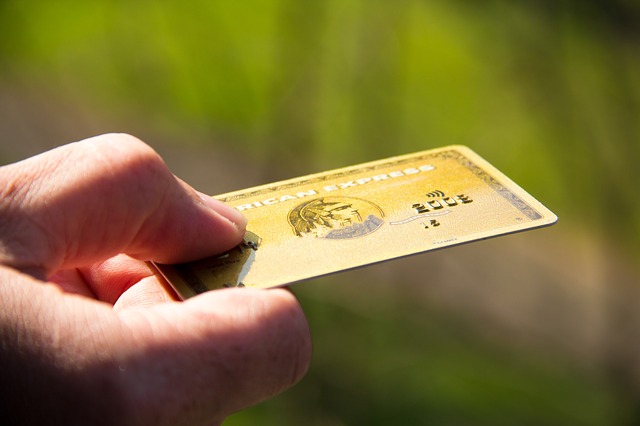
There are many credit cards currencies the travel category.
Some are more valuables than others.
The most valuable credit card currencies are transferable points.
The two types of Credit cards points
Fixed points
Fixed value points are usually the equivalent of the current cash price of a plane ticket or hotel. These usually get you one cent per point.
So if a flight was currently $200 and the currency was 100 points for every penny, you would use 20,000 points for a ticket.
It works the same for hotels.
This basically means you buy the ticket for the same price in points.
This can be ok for domestic redemptions.
Most of the time, it is not the most bang for your buck though.
Transferable points
Transferable points currencies allow you to transfer your points to an airline or hotel.
When traveling internationally, this will give you outsized value.
Let’s look at an example.
Let’s say you want to fly from NYC to London in business class. If the business class ticket costs $1,000, you would need 100,000 points.
If the airline you wanted to fly on costs 50,000 points with the airlines currency, and you used transferable points; you would save 50,000.
Most business class flights are more than $1,000, but the redemption for business class is usually around 60,000 points.
As you can see, this can provide outsized value again. It can also save you a lot of points.
Points are like money.
You don’t want to spend more than you need.
Tip: Transferring to airlines usually always gives bang for your dollar, but transferring to hotels usually does not.
The one exception to this is Hyatt hotels with Chase Ultimate points.
That is why Hyatt hotels should always be looked at first if you have the Chase Preferred, Chase Reserve, or Ink Preferred credit cards; and you will be using points.
4 Main transferable credit card currencies
- Chase Ultimate Rewards
- American Express Membership Rewards
- Capital One Miles
- Citi Thank You Points
- Marriott Bonvoy Points
Each Credit Card’s Partners
Chase Ultimate Reward Partners
| Aer Lingus Aer Club | IHG Rewards Club |
| Air France/KLM Flying Blue | Marriott Bonvoy |
| British Airways Executive Club | World Of Hyatt |
| Emirates Skywards | |
| Iberia Plus | |
| JetBlue TrueBlue | |
| Singapore KrisFlyer | |
| Southwest Airlines Rapid Rewards | |
| United MileagePlus | |
| Virgin Atlantic Flying Club |
American Express Membership Rewards
| Aer Lingus Aer Club | Choice Privileges |
| Aeroméxico Club Premier | Hilton Honors |
| Air Canada Aeroplan | Marriott Bonvoy |
| Air France/KLM Flying Blue | |
| Alitalia MilleMiglia | |
| ANA Mileage Club | |
| Avianca LifeMiles | |
| British Airways Executive Club | |
| Cathay Pacific Asia Miles | |
| Delta SkyMiles | |
| El Al Matmid | |
| Emirates Skywards | |
| Etihad Guest | |
| Hawaiian Airlines HawaiianMiles | |
| Iberia Plus | |
| JetBlue TrueBlue | |
| Qantas Frequent Flyer | |
| Singapore Airlines KrisFlyer | |
| Virgin Atlantic Flying Club |
Capital One Miles
| Air Canada (Aeroplan) |
| Air France KLM (Flying Blue) |
| Alitalia (MilleMiglia Program) |
| Avianca (LifeMiles) |
| Cathay Pacific (Asia Miles) |
| Emirates (Emirates Skywards) |
| Etihad Airways (Etihad Guest) |
| EVA Air (Infinity MileageLands) |
| Finnair (Finnair Plus) |
| Hainan Airlines (Fortune Wings Club) |
| JetBlue (JetBlue TrueBlue) |
| Qantas (Qantas Frequent Flyer) |
| Qatar Airways (Privilege Club) |
| Singapore Airlines (KrisFlyer) |
Citi Thank You Partners
| Aeroméxico Club Premier | N/A |
| Air France/KLM Flying Blue | |
| Avianca Lifemiles | |
| Cathay Pacific Asia Miles | |
| EVA Air Infinity MileageLands | |
| Etihad Guest | |
| Jet Airways JetPrivilege | |
| JetBlue TrueBlue | |
| Malaysia Airlines Enrich | |
| Qantas Frequent Flyer | |
| Qatar Airways Privilege Club | |
| Singapore Airlines KrisFlyer | |
| Thai Airways Royal Orchid Plus | |
| Turkish Airways Miles & Smiles | |
| Virgin Atlantic Flying Club |
Marriott Bonvoy Points
| Aeroméxico Club Premier |
| Air France/KLM Flying Blue |
| Avianca Lifemiles |
| Cathay Pacific Asia Miles |
| EVA Air Infinity MileageLands |
| Etihad Guest |
| Jet Airways JetPrivilege |
| JetBlue TrueBlue |
| Malaysia Airlines Enrich |
| Qantas Frequent Flyer |
| Qatar Airways Privilege Club |
| Singapore Airlines KrisFlyer |
| Thai Airways Royal Orchid Plus |
| Turkish Airways Miles & Smiles |
| Virgin Atlantic Flying Club |
Why You Want Chase Cards First
So when you get your first set of cards, you want these currencies.
Each bank has rules that allow you to get a certain amount of cards and the sign up bonuses.
For example, American Express has a once in a lifetime rule. You can only earn a sign up bonus once on a card.
Chase has a rule called 5/24. It means if you have opened 5 cards in the past 24 months or 2 years; you will not be approved for any more Chase cards until you are under this rule.
That could take two years.
Since Chase has some of the best travel cards out there, we suggest you apply for Chase cards first.
Your strategy will differ if you have a business.
Business cards for the most (except Capital One business cards) do not count toward your 5/24 limit.
So if you have not opened any credit cards in the past two years, and you open a Chase business card (or another business card like an American Express), you will still have 5 slots left.
Best business cards to start with:
- Chase Ink Preferred
- Chase Ink Unlimited
- Chase Ink Cash
Everyone will be different. Not everyone will care about the Chase Ink Cash’s 5 points at office supply stores (this is great for manufactured spending).
Most people should get the Ink Preferred though for its massive 80,000 sign up bonus. It can be downgraded to the no fee Ink Cash later.
If you have no business, here are personal cards to get started with:
Chase Sapphire Preferred/Chase Sapphire Reserve
Chase Freedom Unlimited
Chase Freedom
Business owners may want both the Ink Preferred and personal Sapphire Preferred . Most businesses will definitely want the personal Chase Freedom card too.
Chase also has hotel and airline cards with the following:
Marriott
IHG
Hyatt
United
Southwest
Just keep in mind the Southwest companion pass is one of the best values in the industry.
A sample strategy for a business owner:
Chase Ink Preferred
Chase Ink Unlimited
Chase Ink
Chase Freedom
Southwest Business Card
Hyatt Credit card
Most issuers have a limit for how many cards you can have, usually around five, so you want to get the important cards first.
Chase only lets you get 2 cards in 30 days.
So while you are waiting for your next Chase card, you could be getting a card from one of the above transferable points issuers like American Express or Capital One.
Since you have a business, you can apply for business cards that do not count to 5/24.
This may be your first year of applications.
A sample strategy for someone who does not own a business:
Chase Sapphire Preferred
Chase Freedom Unlimited
Chase Freedom
Hyatt hotel card
Southwest personal card
Again, it could take a year to get these cards.
Summary
Transferable credit cards allow you to get outsized bang for your buck, so you should focus on the 4 currencies we mentioned earlier.
Because of the Chase 5/24 rule; you will want to get the Chase cards first.
Keep in mind credit card rewards is a long-term game, and the strategies we mentioned may take at least a year.
Your first 2-3 cards will probably get you your first free trip though.

